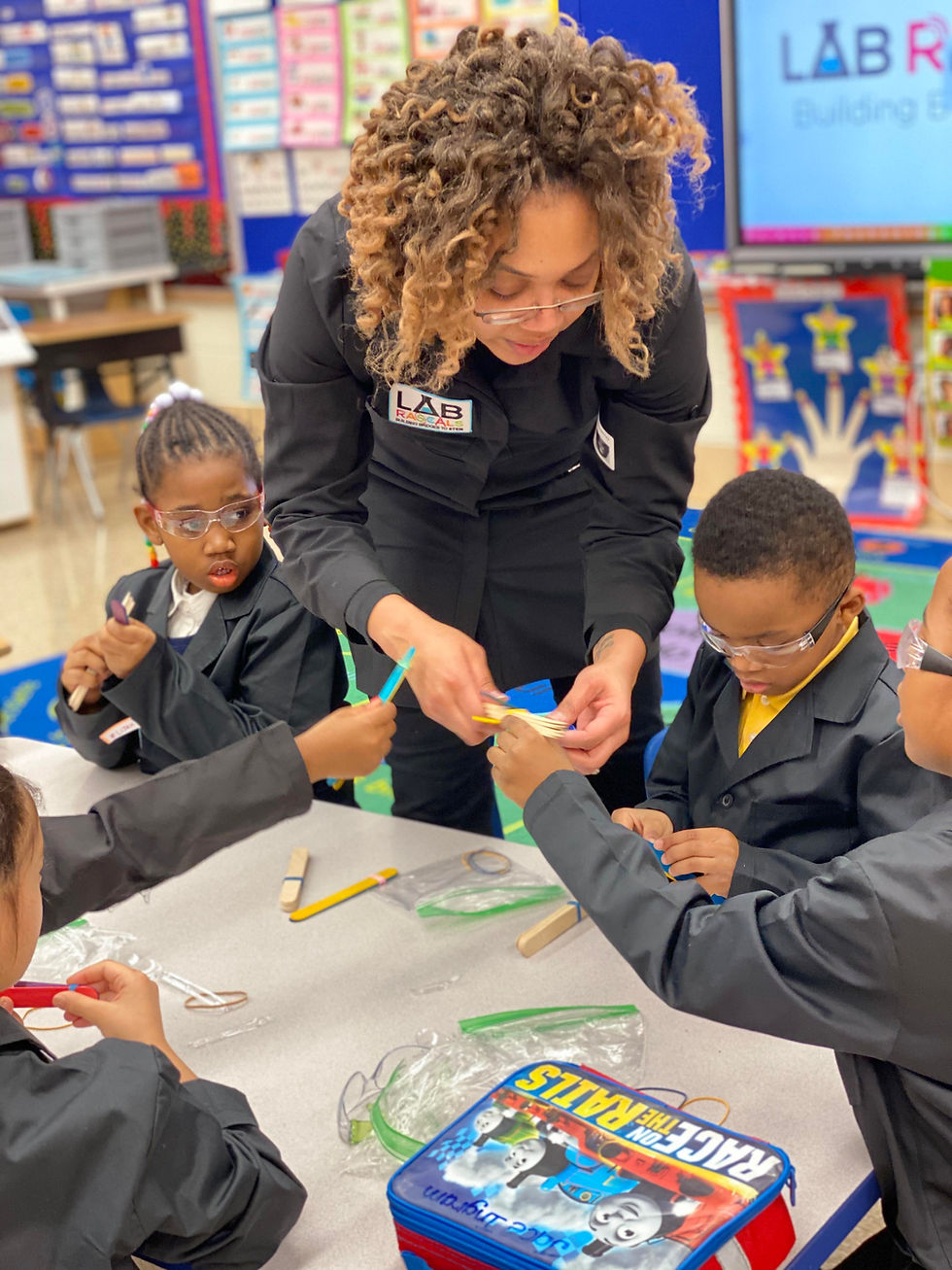HOW VIRTUAL LEARNING WIDENS THE EDUCATION GAP FOR LOW-INCOME STUDENTS
- Club Lab Rascals

- Aug 15, 2020
- 4 min read
Updated: Aug 16, 2020

Closing the achievement gap in under-funded school districts isn’t a part of America’s new normal in the age of the coronavirus crisis. Education and social justice advocates have worked to close the gap for some time now. But increasing disparities that mandatory virtual learning inflict on students attending those schools present unprecedented challenges.
Virtual learning, once labeled a luxury for affluent families, with the price tag to match, is now a necessity for nearly all school-aged students. And although virtual schooling has the potential to close the educational opportunity gap in low-income communities, right now it’s doing quite the opposite. Virtual public schooling threatens to put an entire generation's future at stake as school districts across the country strategize to overcome the number one unprecedented tech gap challenge:

How will students living in low-income households and inadequately funded school districts receive the same quality of education as students from financially well-off households in well-funded school districts?
It’s no secret that children in minority communities make up the majority population of underfunded school districts. But what seems to have taken many U.S. school districts by surprise is this. Even a healthy and interactive online learning environment that incorporates the best virtual learning methods of all time, does not solve the problem of actually gaining access to effective e-learning resources.

Without electronic learning necessities like laptops, tablets, and WiFi, a student cannot benefit from the educational technologies and digital learning resources that in a large part define a quality education in the COVID era.
While parents of school-aged children on the middle to upper-class socioeconomic scale say the silver lining in mandatory homeschooling lies in the convenience of working remotely from the bed, low-income parents face a starkly different reality that continues to threaten their livelihood.
Parents leading low-income households make up a significant percentage of the 14 million unemployed Americans who lost their jobs in the wake of COVID-19. Others are essential workers living paycheck to paycheck. Many are forced to work fewer hours than they did pre-COVID19 due to corporate budget cuts deeply impact hourly workers who depend on working a minimum number of hours to make ends meet.

Another low-income group that bears the financial brunt of coronavirus fallout are families that rely totally on government assistance for housing, food, and healthcare.
No matter where a family fits on the low-income scale, access to e-learning devices such as laptops, cellphones, and learning tablets were the #1 immediate challenge faced by children in low-income households when COVID19 abruptly shut down schools back in March of 2020. This disadvantage remains a challenge for many families as schools prepare to go back in session for the Fall 2020 school year.
For one, the average price of a personal computer is $632, and according to this paycheck calculator tool, low-income workers making minimum wage in the state of Georgia bring home $290 a week before taxes. That’s if they are able to score a maximum of 40 hours of work in a week, which is rare. Now measure that up against the average household grocery spend in Atlanta averaging $81 a week, plus household essentials. Talk about stretching dollars.
Fortunately, some school systems are making strides to close the tech gap at no cost to low-income students and their families. The Texas Public School System is considering a $400 million plan to help close the tech gap for Texas Schoolchildren. If such an inclusive plan is adopted and enacted by every state, thousands to millions of economically disadvantaged school-aged students would receive laptops or iPads, and WiFi hotspots, nationwide. Prince George’s County Public Schools system in Maryland is also implementing similar initiatives to ensure students have adequate access to educational resources.

Even still, community leaders, teachers, and even students themselves are concerned about how the impact that network learning through virtual learning platforms will have on the development of the whole child.
Extracurriculars like sports, arts, and good ole fashioned socializing with friends are equally essential to a child’s development.
Not much has changed in the way affluent communities have chosen to respond to the limitations that virtual schooling and social distancing impose on the development of the whole child. Hiring a private online tutor for children remains an increasing trend among the higher-income population. A trend that was on the rise long before COVID hit.

Fortunately, changemakers within communities of color are taking matters into their own hands, ensuring that minority students can still engage in exciting social opportunities that cater to the whole child. Virtual STEM camps are an emerging trend within black and brown households like the one we host here at Club Lab Rascals.
Our virtual STEM camp seeks to diversity STEM by giving parents an affordable, and sometimes free, option for minority students to join in on hands-on fun and get excited about learning with other kids around the country. We get your kids from dreading virtual learning to looking forward to it.
Here are some examples of activities from our Meteorology Camp STEM labs!
Check out our two free downloads of DIY Junior Meteorologist activities that kids ages 6-11 can use to conduct at home with household items!

One thing about creativity that the coronavirus has proven to all of us is that getting creative about local and global solutions to age-old and unprecedented problems is absolutely possible.
If you know a family with children in need of supplemental education resources and fun social distancing activities, download the activities above and surprise them with DIY supplies




Comments